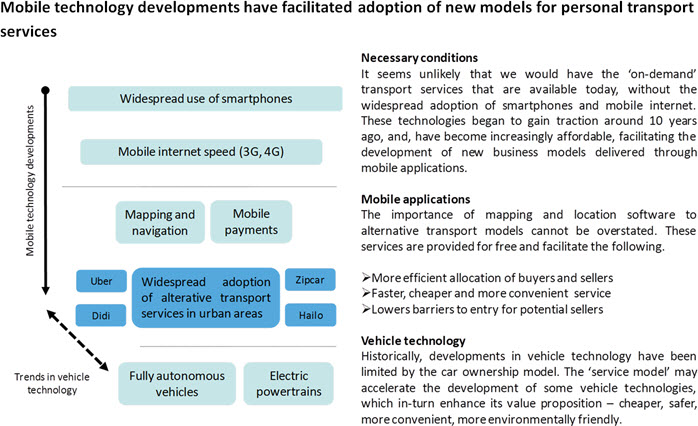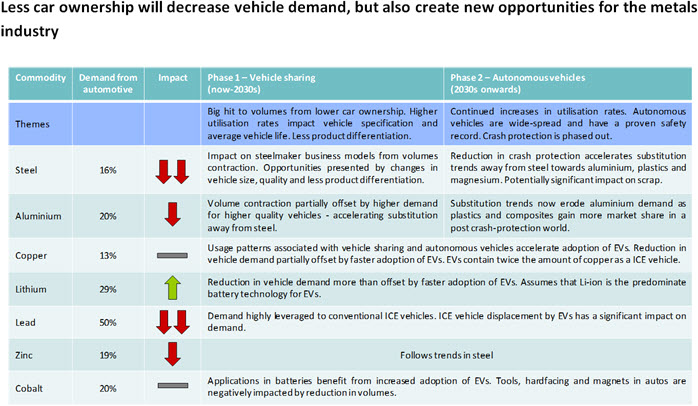
AuthorIan Hiscock
Head of Consulting, China and South East Asia View profileThe success of businesses like ‘Uber’ and ‘Zipcar’ provides a strong indication that new models for logistics are emerging. Perhaps initially viewed as competitors in the taxis and vehicle rentals sector, it is clear that these sorts of businesses have the potential to disrupt the ‘vehicle ownership’ model of personal and commercial logistics.
Taxis and car clubs are not new concepts, but the capability to deliver these services cheaply and ‘on-demand’ is. Whilst the emergence of these new transport services appear very recent, their roots can be found in decades of development and adoption of mobile technology leading to widespread ownership of smartphones, mobile internet access and mapping/location software.

Convenient, ‘on-demand’ personal mobility services offer the possibility of a significant reduction in car ownership, particularly when combined with improvements to public transport, cycle paths, walkways and stronger policies towards vehicle emissions. Moreover, this alternative model has the potential to strengthen itself by accelerating developments in vehicle technology, such as fully autonomous driving and electric powertrains. It is clear that these trends would also have implications for commercial vehicles.
Assessing the impact on metal demand
The impact on metal demand will likely be driven by changes in vehicle demand and specifications, as discussed below.
- Vehicle demand: a reduction in car ownership results in a reduction in vehicle demand and, consequently, metals demand. Currently, personal vehicles have average utilisation rates of around 4%. ‘On-demand’ personal transportation services could have utilisation rates of 30%-40%. Widespread adoption of fully autonomous vehicles could result in availability factors close to 100%. It is unlikely that aggregate utilisation rates will achieve these levels for many decades because the vehicle ownership model will remain competitive to segments of the population that use a car as their primary mode of transport (i.e. to get to work), or that live in rural areas. However, even a small change in average vehicle utilization could have big impact on the total number of cars required. This might start with city dwellers that use a car as a secondary mode of transport, substituting for on-demand personal transport services. There are currently around 1 billion vehicles in the world. If utilisation rates were 10% rather than 4%, we would only need 400 million cars for the same number of kilometres driven.
- Vehicle specifications: the interactions between ‘on-demand’ transport services and vehicle technology will likely change the average quality, size and composition of the vehicles we drive, that drive us or drive themselves.
An initial assessment of the direction and possible impact on metals demand is given in the table below.
